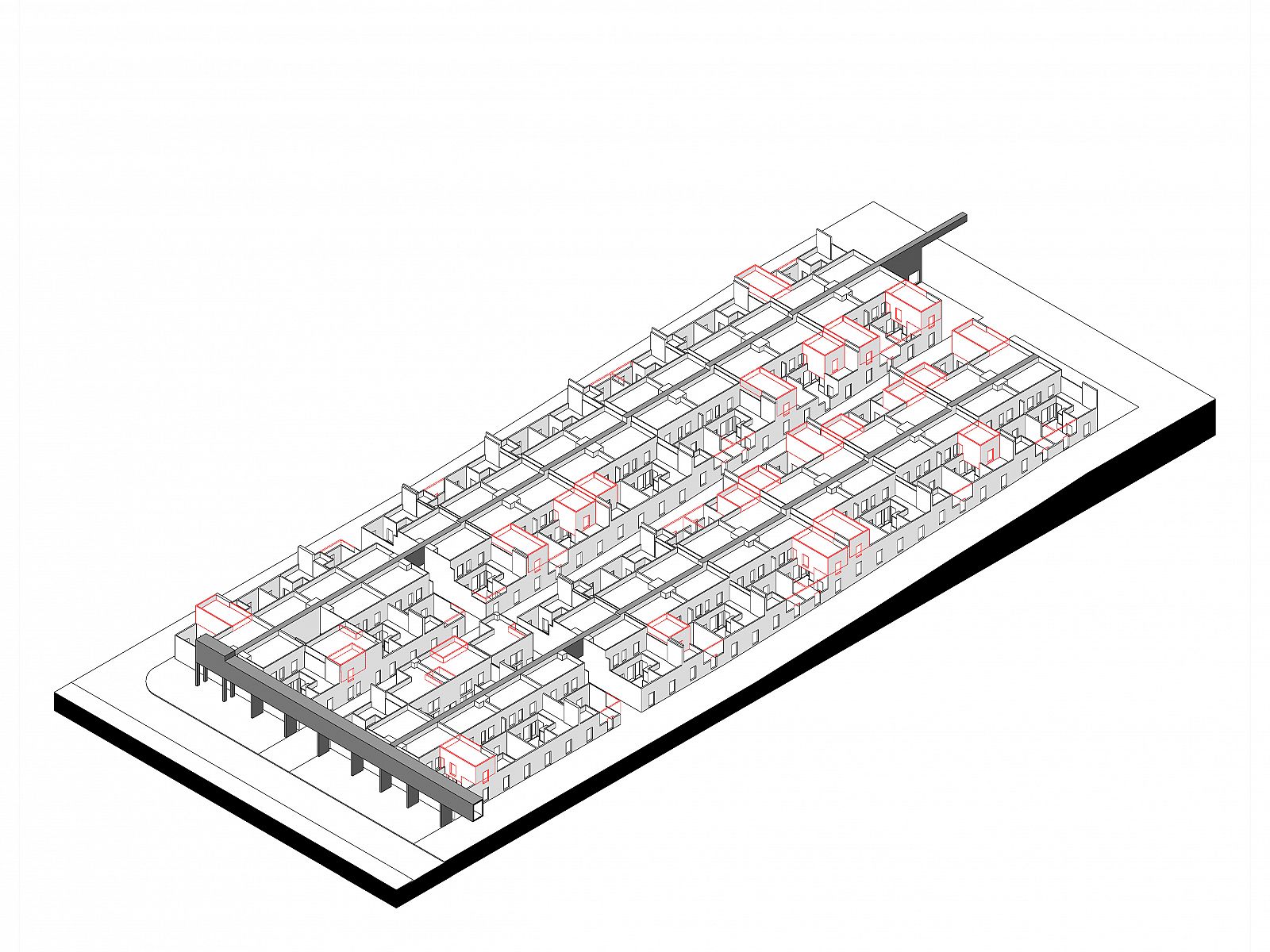- Angola, Uíge
- Bangladesh, Dhaka
- Chile, Iquique
- Egypt, Luxor
- Ethiopia, Addis Ababa
- Ghana, Accra
- Ghana, Tema
- Ghana, Tema Manhean
- Guinee, Fria
- India, Ahmedabad
- India, Chandigarh
- India, Delhi
- India, Indore
- India, Kerala
- India, Mumbai
- India, Navi Mumbai
- Iran, multiple
- Iran, Shushtar
- Iran, Tehran
- Italy, Venice
- Kenya, Nairobi
- Nigeria, Lagos
- Peru, Lima
- Portugal, Evora
- Rwanda, Kigali
- Senegal, Dakar
- Spain, Madrid
- Tanzania, Dar es Salaam
- The Netherlands, Delft
- United Kingdom, London
- United States, New York
- United States, Willingboro
- 2020-2029
- 2010-2019
- 2000-2009
- 1990-1999
- 1980-1989
- 1970-1979
- 1960-1969
- 1950-1959
- 1940-1949
- 1900-1909
- high-rise
- incremental
- low-rise
- mid-rise
- new town
- sites & services
- slum rehab
- Tanushree Aggarwal
- Rafaela Ahsan
- Deepanshu Arneja
- Tom Avermaete
- W,F,R. Ballard
- Ron Barten
- Michele Bassi
- Romy Bijl
- Fabio Buondonno
- Ludovica Cassina
- Daniele Ceragno
- Jia Fang Chang
- Henry S. Churchill
- Bari Cobbina
- Gioele Colombo
- Charles Correa
- Freya Crijn
- Ype Cuperus
- Javier de Alvear Criado
- Jose de la Torre
- Junta Nacional de la Vivienda
- Margot de Man
- Jeffrey Deng
- Kim de Raedt
- H.A. Derbishire
- Pepij Determann
- Kamran Diba
- Jean Dimitrijevic
- Constantinus A. Doxiadis
- Jane Drew
- Jin-Ah Duijghuizen
- Michel Écochard
- Carmen Espegel
- Hassan Fathy
- Federica Fogazzi
- Arianna Fornasiero
- Manon Fougerouse
- Frederick G. Frost
- Maxwell Fry
- Yasmine Garti
- Greater London Council (GLC)
- Anna Grenestedt
- Vanessa Grossman
- Marcus Grosveld
- Gruzen & Partners
- Helen Elizabeth Gyger
- Shirin Hadi
- Francisca Hamilton
- Klaske Havik
- Katrina Hemingway
- Dirk van den Heuvel
- Jeff Hill
- Bas Hoevenaars
- S. Holst
- Maartje Holtslag
- Housing Development Project Office
- Michel Kalt
- Stanisław Klajs
- Stephany Knize
- Bartosz Kobylakiewicz
- Tessa Koenig Gimeno
- Mara Kopp
- Annenies Kraaij
- Aga Kus
- Isabel Lee
- Monica Lelieveld
- Jaime Lerner
- Levitt & Sons
- Lieke Lohmeijer
- Femke Lokhorst
- Fleur A. Luca
- Qiaoyun Lu
- Andrea Migotto
- Harald Mooij
- Julie Moraca
- Nelson Mota
- Dennis Musalim
- Timothy Nelson Stins
- Gabriel Ogbonna
- Federico Ortiz Velásquez
- Sameep Padora
- Santiago Palacio Villa
- Antonio Paoletti
- Caspar Pasveer
- Casper Pasveer
- Andreea Pirvan
- PK Das & Associates
- Daniel Pouradier-Duteil
- Michelle Provoost
- Pierijn van der Putt
- Wido Quist
- Frank Reitsma
- Raj Rewal
- Robert Rigg
- Charlotte Robinson
- Roberto Rocco
- Laura Sacchetti
- Francisco Javier Sáenz de Oiza
- Ramona Scheffer
- Frank Schnater
- Dr. ir. Mohamad Ali Sedighi
- Zhuo-ming Shia
- Manuel Sierra Nava
- Carlos Silvestre Baquero
- Marina Tabassum
- Brook Teklehaimanot Haileselassie
- Anteneh Tesfaye Tola
- Fabio Tossutti
- Paolo Turconi
- Burnett Turner
- Frederique van Andel
- Ties van Benten
- Hubert van der Meel
- Anne van der Meulen
- Anja van der Watt
- Marissa van der Weg
- Jan van de Voort
- Dick van Gameren
- Annemijn van Gurp
- Bas van Lenteren
- Rens van Vliet
- Rohan Varma
- Stefan Verkuijlen
- Pierre Vignal
- Gavin Wallace
- W.E. Wallis
- Michel Weill
- Ella Wildenberg
- V. Wilkins
- Alexander Witkamp
- Krystian Woźniak
- Hatice Yilmaz
- Haobo Zhang
- Gonzalo Zylberman
- Honours Programme
- Master thesis
- MSc level
- student analysis
- student design
- book (chapter)
- conference paper
- dissertation
- exhibition
- interview
- journal article
- lecture
- built
Designed Self-Help
Producing Closed Forms for Open Buildings
Designing Self-help sounds like a contradiction in terms. Indeed, a great deal of the scholarly accounts on self-help housing excludes the agency of the designer, stressing instead the roles of the policy maker and the owner-builder. In the architecture discipline, from the late 1950s through the 1980s the notions of open form, group form and open building, gained momentum as a reconceptualization of the relation between author and addressee. Yet, while pursuing similar goals, assisted self-help housing was a matter of interest mainly for social scientists, even though it became pervasive as an affordable housing policy in the developing world. In this paper I discuss the importance of the design decision-making process in assisted self- help housing, reshaping the latter as part and parcel of the rationale of the idea of open building. This paper will address two key questions: To what extent the agency of the designer in assisted self-help housing alienates or emancipates the other stakeholders in the process? And how can design expertise contribute for creating a more open and inclusive participation of the many actors involved in self-help housing strategies? I will examine the case of the Malagueira neighbourhood, a housing estate designed by Álvaro Siza in the late 1970s for the periphery of the Portuguese city of Évora. Supported by archival material, interviews, and empirical observations, I will discuss the contribution of design expertise to activate a productive negotiation between collective identity and individual expression. This paper will explore the intertwined relation between policy makers, designers and the grassroots to critically reflect on the use of self-help strategies to foster citizens’ participation in the design-decision making process. The paper asserts that, in Malagueira, a carefully crafted design strategy to accommodate growth and change over time contributed to foster ownership and to promote social inclusion.
